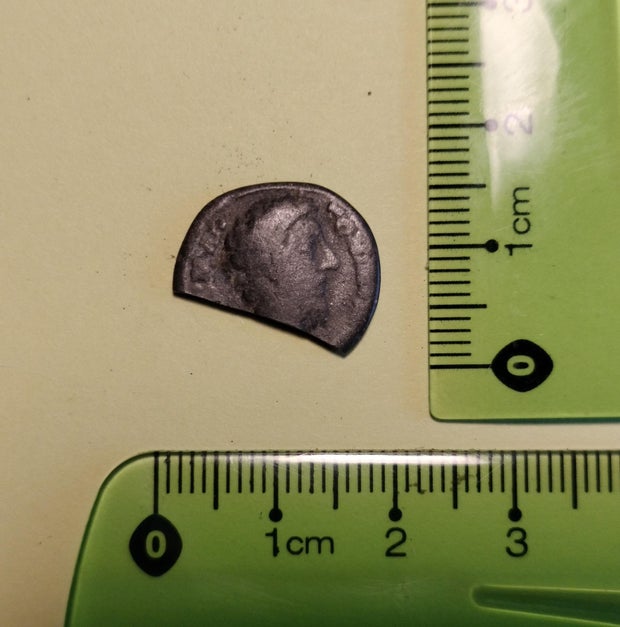Rare ancient Roman treasure unearthed by metal detectorists in Poland
Metal detectorists in Poland helped discover a large cache of ancient Roman coins, Polish officials announced.
The “Group of Explorers” regularly search for metal artifacts and treasures, according to a social media post Friday from the Lublin Voivodeship Conservator of Monuments. The group, led by Janusz Szabat and Piotr Magoch, began a search of the fields surrounding the small town of Księżopol.
In a very small area – less than a fifth of a square mile – the searchers found “a very large number of metal archaeological monuments,” the conservator said.
The rarest items found by the searchers were a small cache of ancient Roman denars, or silver coins. There were three silver denars imprinted with the face of Roman emperor Antonius Pius, minted sometime between 138 and 161, as well as a silver denar imprinted with the face of his wife, Faustyna the Younger, minted in 141. A fourth coin with the face of Antonius Pius was found, but this one was minted between 146 and 152, and a part had been intentionally cut away, likely during a trade exchange, according to the conservator. There was also a silver denar with the face of Marcus Aurelius, minted in 174.
Lublin Voivodeship Conservator of Monuments
There were also some counterfeit denars, made by the Germanic Visigoths. One coin could not be read, but another was again of Antonius Pius. This counterfeit coin is “poorly readable,” the conservator noted, but has an image of the emperor and a copy of the inscription on the real coins.
The last coin in the cache was a larger denar, twice the size of the typical coin of this make. That size makes it “fairly rare,” the conservator noted. The coin was imprinted with the face of empress Herennia Cupressenia Etruscilla, and was minted between 249 and 251. A quarter of the coin was cut off, again likely during a trade transaction, according to the conservator.
Also found at the site of the excavations were “several small silicon tools” and “dozens of pieces of pottery,” according to the conservator. The age of the tools could not be confirmed, but the pottery fragments are “dominated” by pieces from the Roman period, according to the conservator. One fragment dates as far back as the Early Middle Ages, while other pieces are more recent.
Lublin Voivodeship Conservator of Monuments
The amount of items found in such a small area led officials to believe that they are “dealing with a new, previously unknown archaeological position” that is of “very valuable scientific and conservation points.”
Excavation tests will be performed in the area, the conservator said, and more searches of the fields will be carried out.






